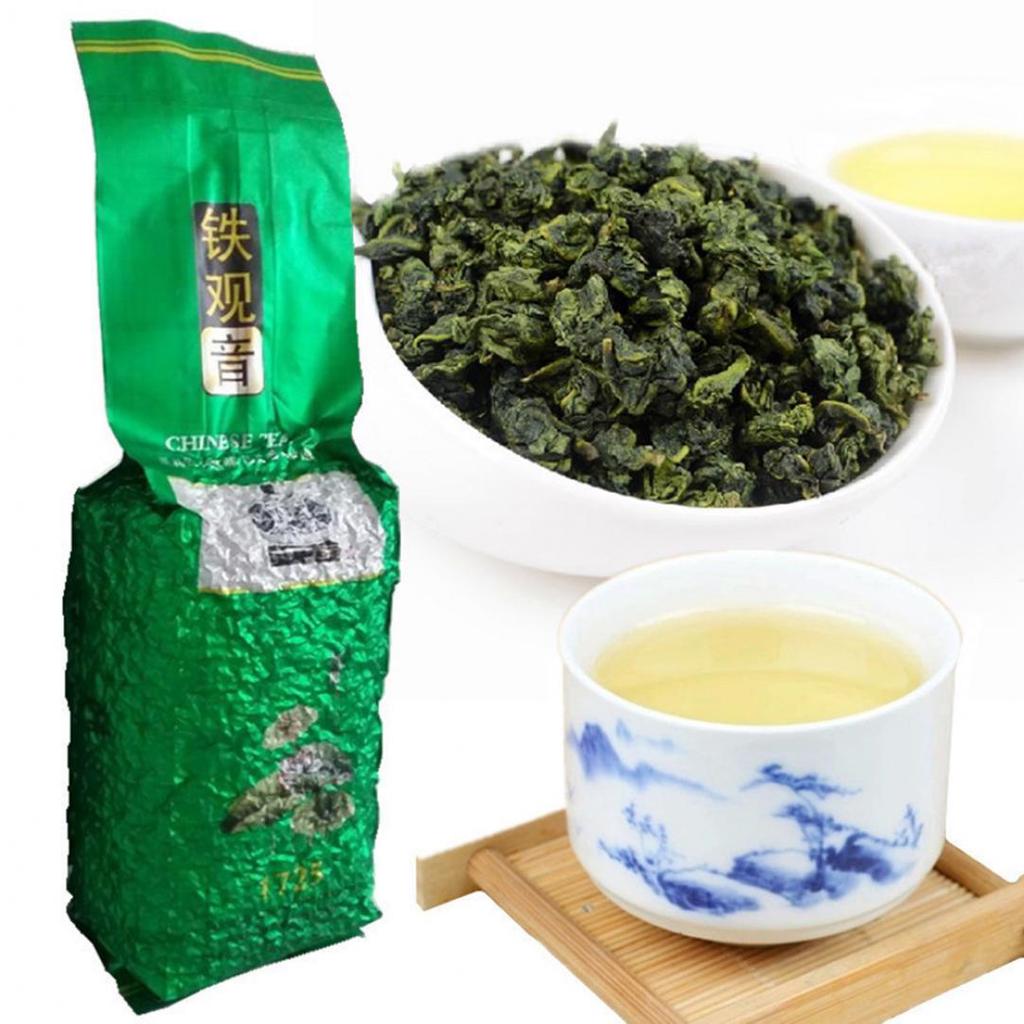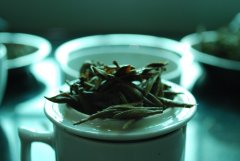What does Tieguanyin belong to? is it green tea? Where can I buy authentic Tieguanyin oolong tea?
Authentic Anxi Tieguanyin
Anxi in Fujian Province produces a kind of famous tea, which is loved by many Chinese people. It is Tieguanyin. The name Tieguanyin originally refers to a specific variety. In a sense, Tieguanyin is a kind of oolong tea produced by Tieguanyin. In another case, some people may name a kind of tea Tieguanyin because the tea is made using Tieguanyin's standard production method. In this case, other tea varieties often process and sell Tieguanyin. However, we are only looking for Tieguanyin varieties of tea because of its original definition.
In Anxi, Tieguanyin was invented in the Qing Dynasty. Before that, other kinds of tea, such as white tea and green tea, had been produced. Tieguanyin, the most famous kind of tea in China, has been very popular for centuries. There is no doubt that Tieguanyin tea can be found on the menus of most Chinese restaurants in the world. In addition to the huge demand of Tieguanyin in the world tea market, Tieguanyin is highly sought after in China's domestic tea market, not only for its own consumption, but also as one of the first choice of gift tea on many occasions.

The huge market demand has promoted the mass production of Tieguanyin. Production goes on all the year round from spring to winter. Without the application of pesticides and chemical fertilizers, it is difficult to manage the output and meet the market demand. Therefore, despite the huge output, it is difficult for us to obtain high-quality tea that meets the Japanese pesticide standards. After all, we only choose a limited number of standard spring tea.
The production technology of Tieguanyin was handed down from Wuyi. It turns out that Tieguanyin, like Wuyi oolong tea, is re-baked. However, Tieguanyin, which is not baked, has become more popular. The one that is not baked is called Qingxiang (sometimes called green incense), and the color is bright green.
It's hard to believe that the smell is natural.
Some tea books often say that the smell of Qingxiang Tieguanyin is reminiscent of orchid bouquets. To me, its aroma is a little fruity, like a fresh little peach. The soup is bright in color and light yellowish green. Anyone who tastes Tieguanyin for the first time will be surprised by its strong taste. It is hard to believe that its taste is natural and is produced in the process. Quite a few tourists fell in love with Chinese tea simply because they tasted Qingxiang Tieguanyin during their visit to China.
It's green. But in fact, it is deeply fermented.
Many people say that modern Tieguanyin is like green tea because the color of dried leaves is green.
However, this is an absolutely wrong judgment. In fact, Tieguanyin is a highly fermented tea, even though its color is green.
Tieguanyin is a highly fermented tea. Although it looks as green as green tea, it is very different from green tea. The fermentation rate of Tieguanyin is higher than that of Taiwan alpine oolong tea. After fermentation, the edge of Tieguanyin leaf is red.
As a typical process of Tieguanyin, the red edges are removed from the leaves, although there are some exceptions.
Traditionally, red edges are removed by hand. Nowadays, manual processing has been replaced by machinery.
Because in the above process of Tieguanyin, we may find that the brewed leaves do not look beautiful, even if they are of high quality. If you judge its quality from its appearance, it looks like a very low-end tea.
Tieguanyin still contains branches after rolling. If you look at the dry leaves, you will notice protruding brown branches.
This branch affects the taste of Tieguanyin tea and looks unsightly. Therefore, after the first drying process, the branches are removed manually. From May to June, if you go to Anxi area, you will find that many people are working very hard to dismantle the branch of Tieguanyin tea.
Important Notice :
前街咖啡 FrontStreet Coffee has moved to new addredd:
FrontStreet Coffee Address: 315,Donghua East Road,GuangZhou
Tel:020 38364473
- Prev

Characteristics of Starbucks store design style in different regions is the Changzhou Qingguo Lane Starbucks store good-looking?
As the bearer of the coffee industry, Father Xing has made a new flower (door). On Sept. 8, Starbucks' official Weibo announced that Starbucks has opened a new store, this time in Changzhou. According to Starbucks' official sources, the cafe is located in Qingguo Lane, one of the oldest ancient alleys in Changzhou and has a reputation as the first lane of celebrities in the south of the Yangtze River. as everyone knows
- Next

Which brand of Anxi Tieguanyin Tea is the most authentic AA1276 price list of top ten Tieguanyin brands
The uniqueness of the Tieguanyin production process is in Anxi, where tea began to sprout in March. During this period, most of China's tea was picked and processed. However, Tieguanyin was not pulled in March or April. Picking takes place only when the tea is ripe. By that time, the leaves will become very big and hard. Very mature twigs are used to make Tieguanyin. Remove Tieguanyin leaves in May
Related
- What effect does Italian American coffee with filter paper have? Will coffee taste better if it is put on filter paper at the bottom of the powder bowl?
- What is the color difference in coffee beans? What are the characteristics of honey processed coffee beans? Why are the anaerobically treated coffee beans uneven in color?
- How does novice Xiaobai quickly get started and make coffee? Newbies learn to make coffee by hand and share the specific steps and process process!
- Costa tea has a shelf life of 100 years?! Expert: Unable to verify
- It's a huge uproar! American milk addition was rejected by Manner employees?!
- Mocha pot coffee bean recommendations| How fine and how much powder should be used for grinding? What parameter ratios do I need to use to make milk with Mocha pot coffee?
- What are the characteristics of the world's top ten coffee beans treated with Costa Rica honey? How to make black honey kadura from Tarazhu Pilon Processing Plant taste good?
- How to make deep-roasted coffee? What grinding water temperature does authentic Jamaica Blue Mountain No. 1 coffee use to brew it well?
- Selected high-grade rose summer coffee flavor tasting guide Why Panama rose summer has the aroma of flowers and fruits
- What equipment does a novice Xiaobai need to buy to learn to make coffee? Filter cup electronic scale bean grinder manual flushing pot purchase guide

